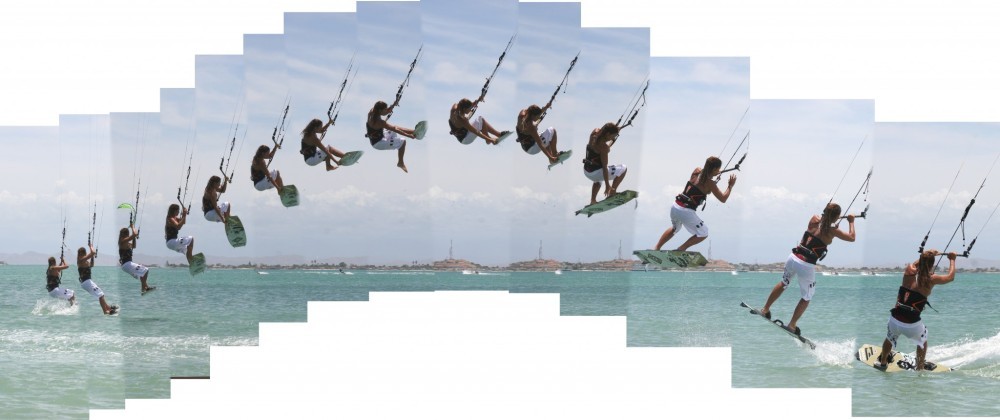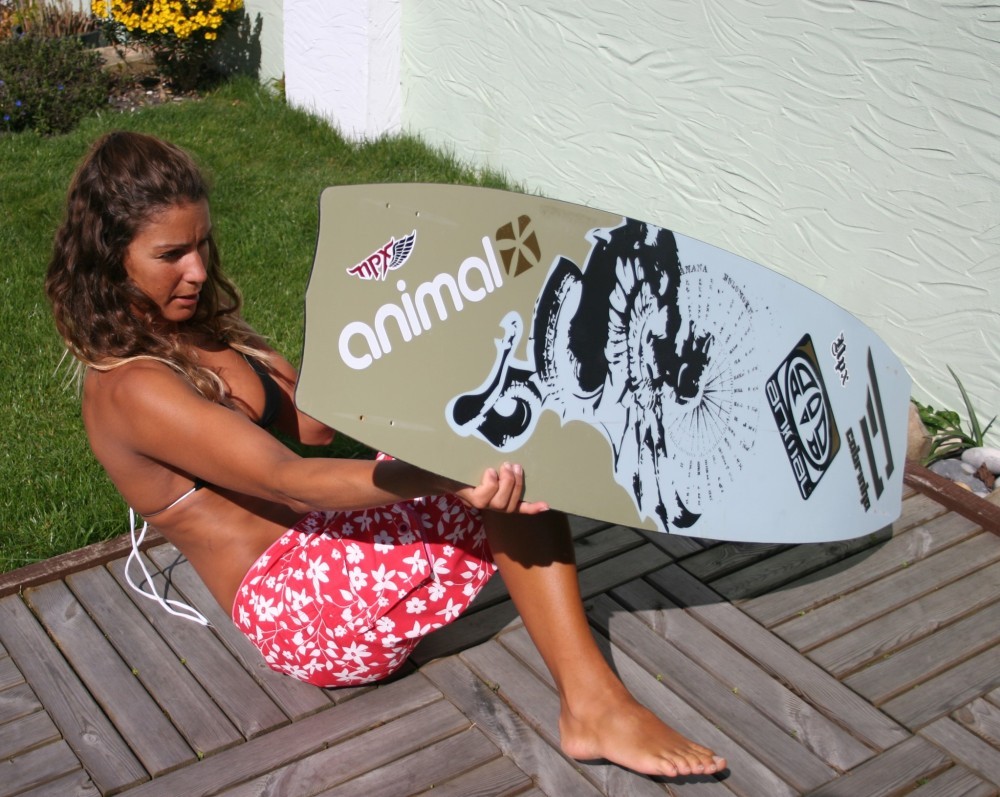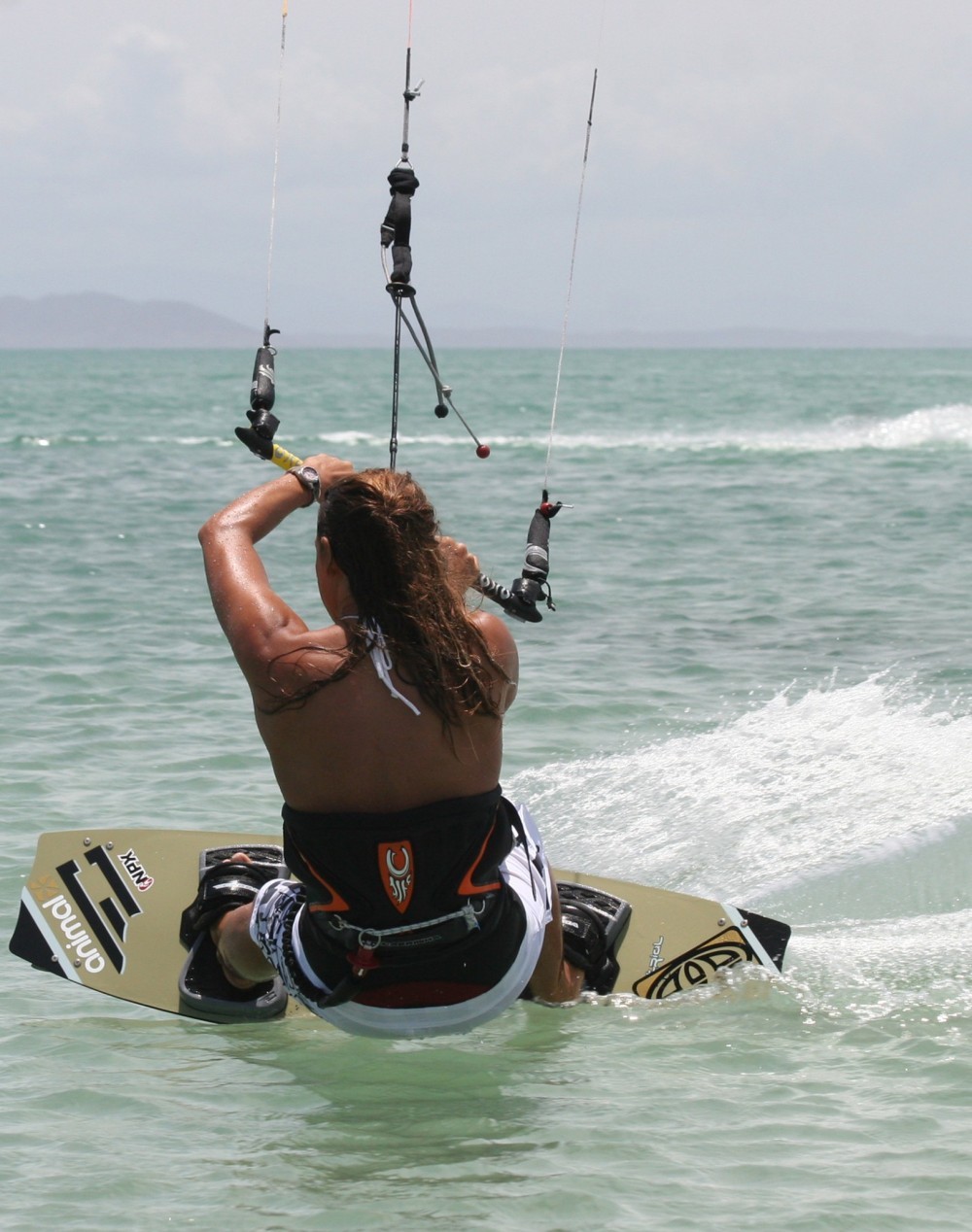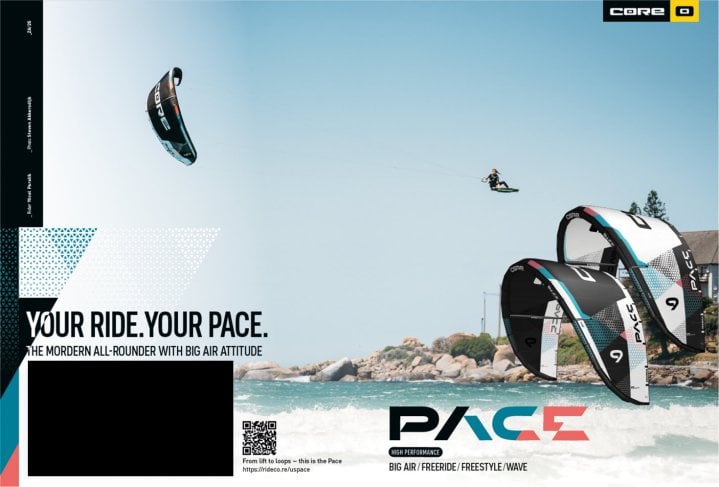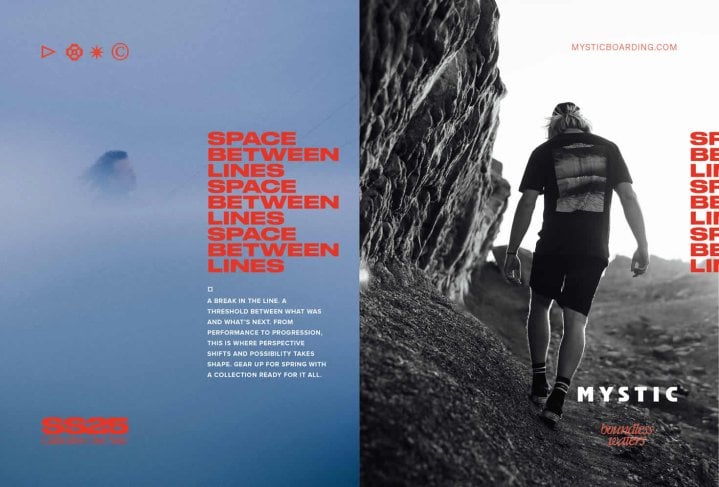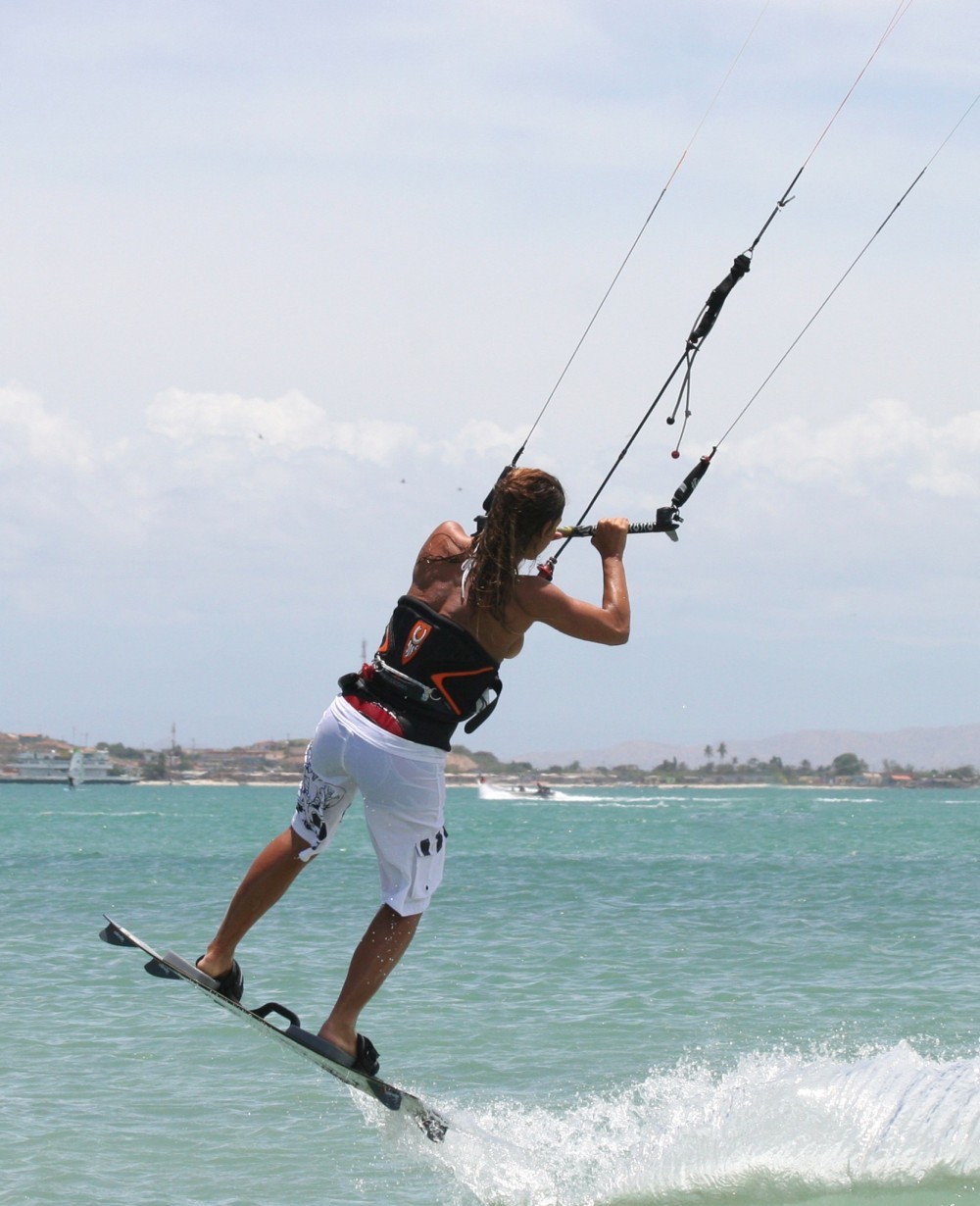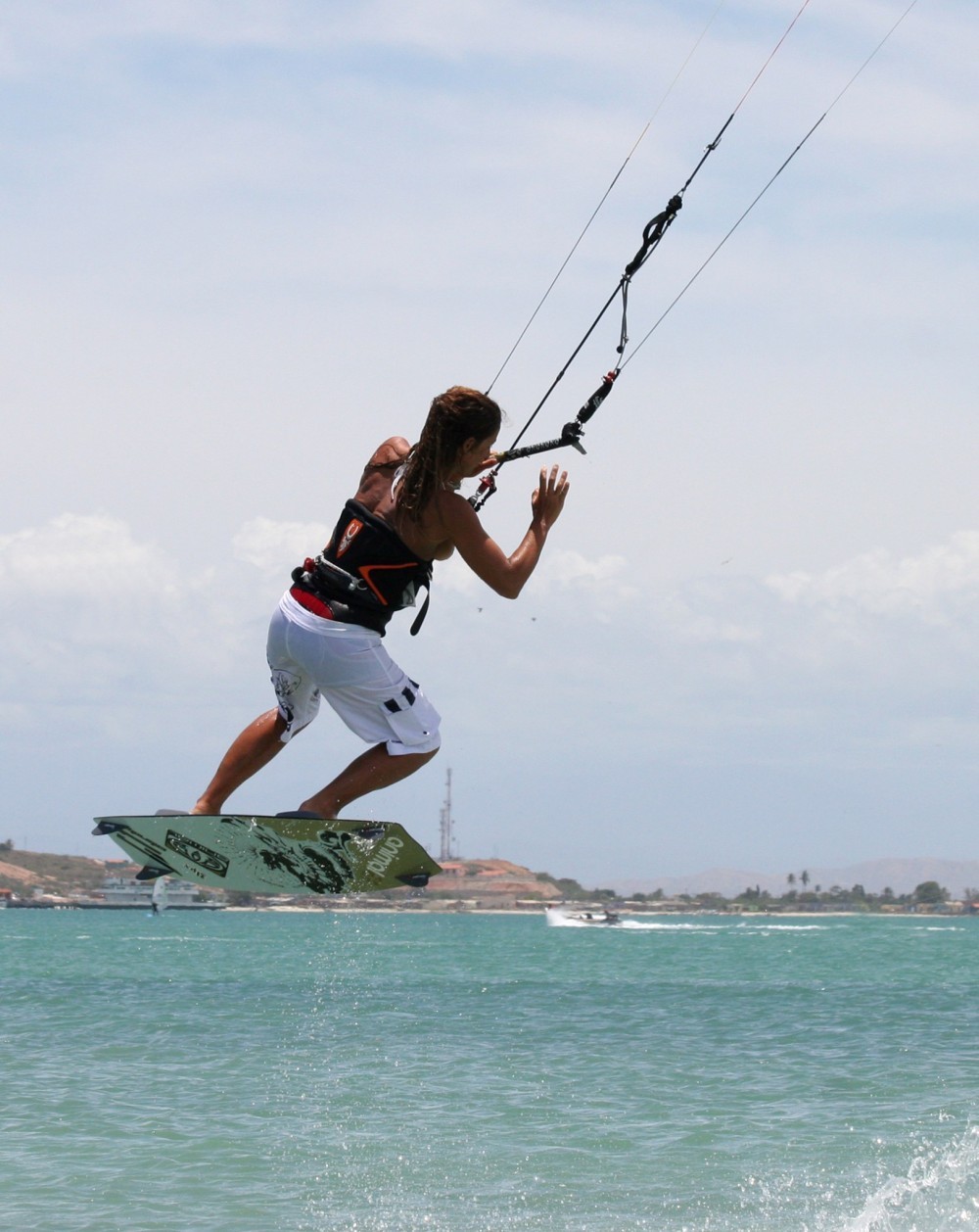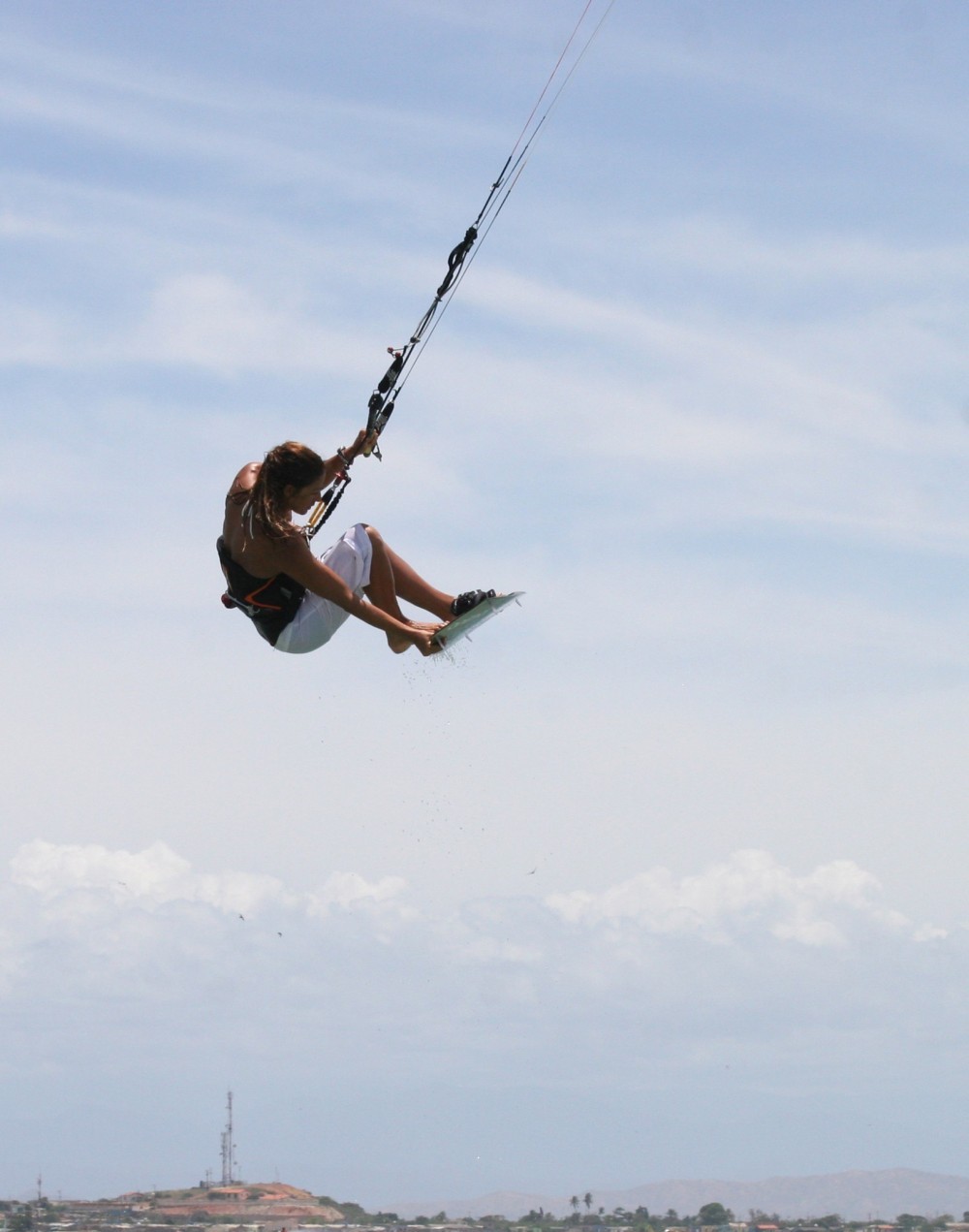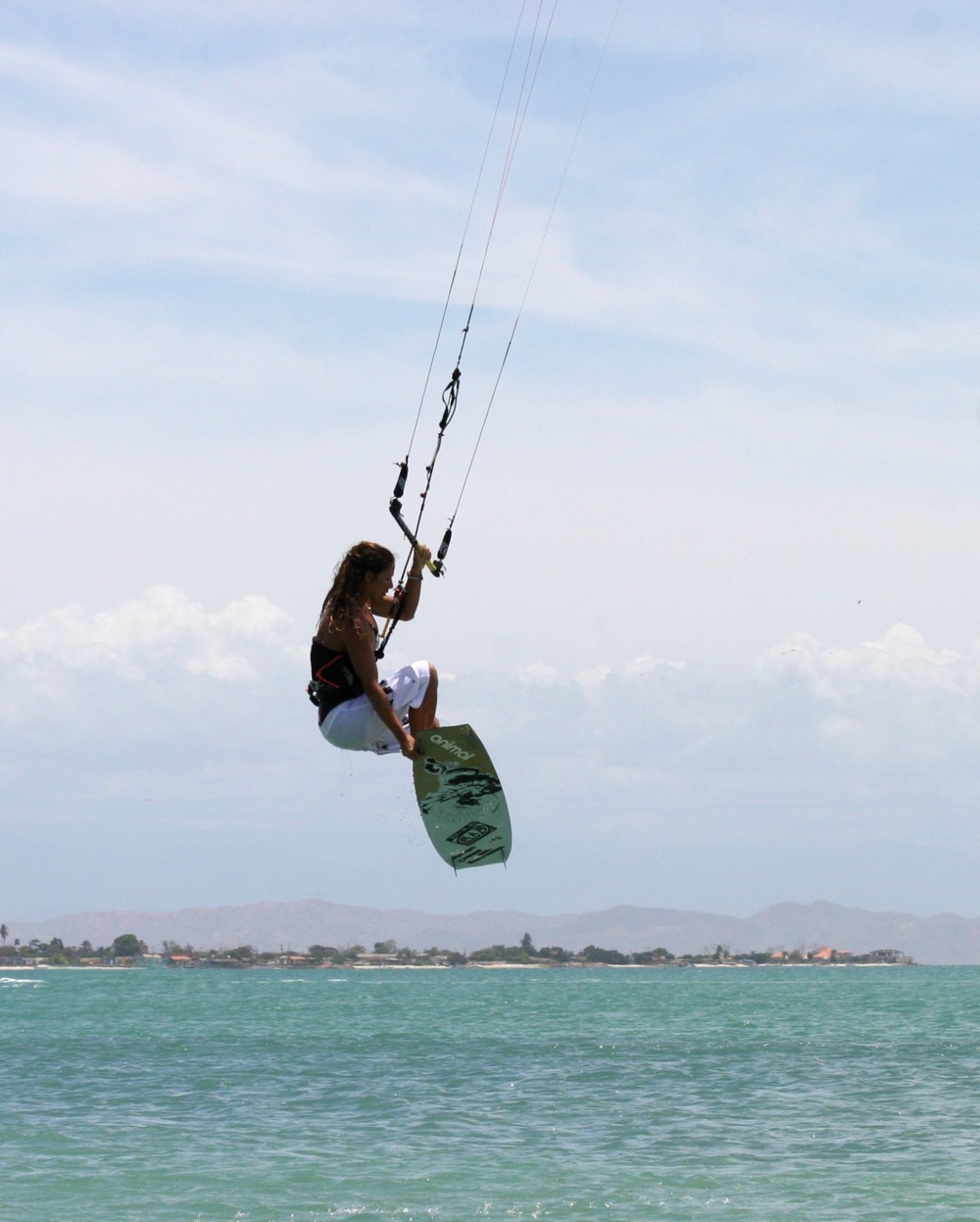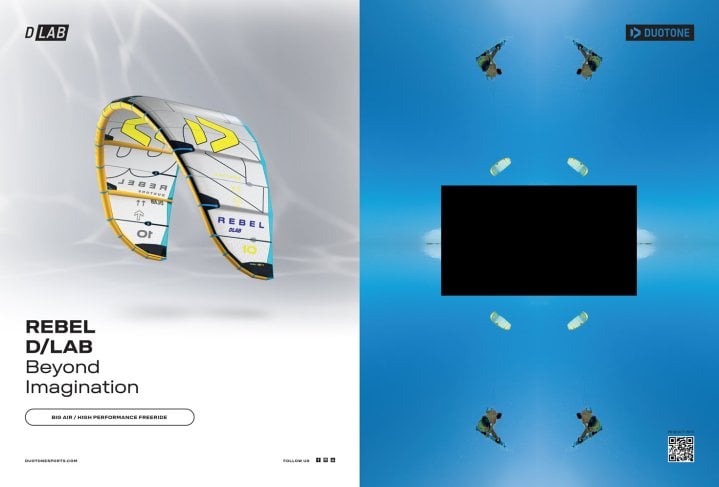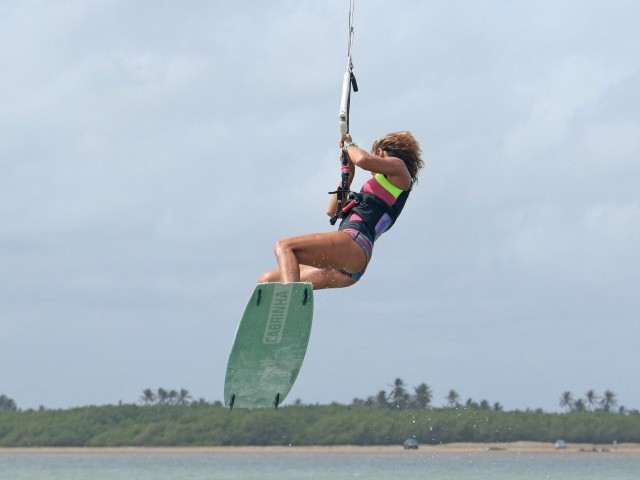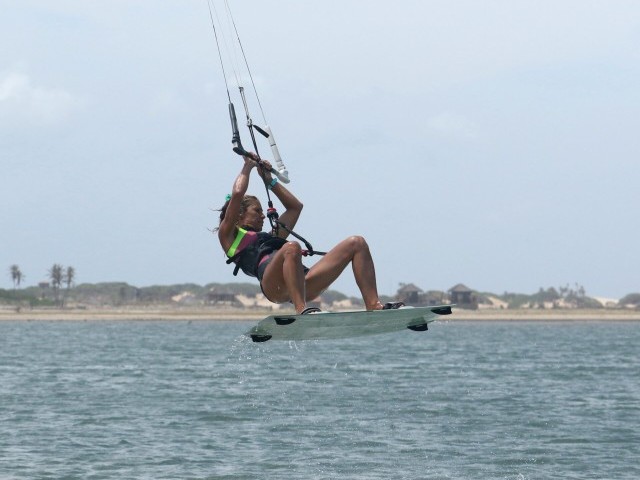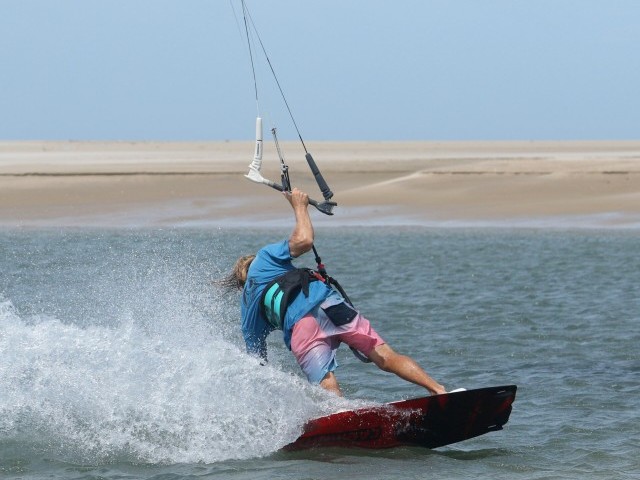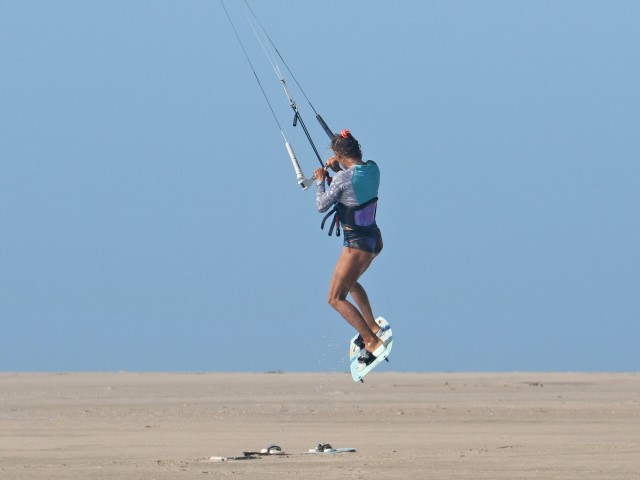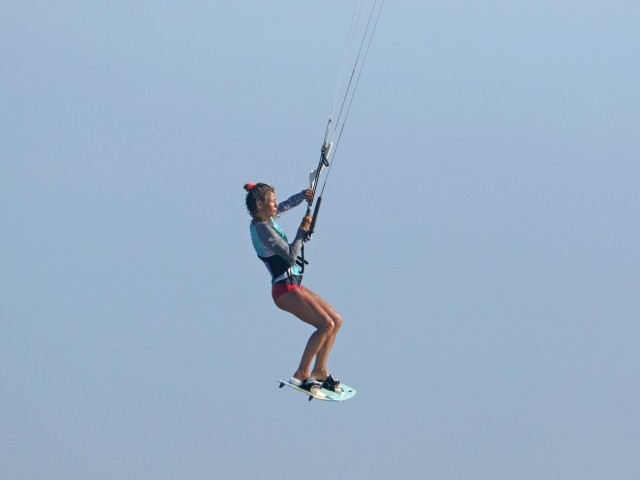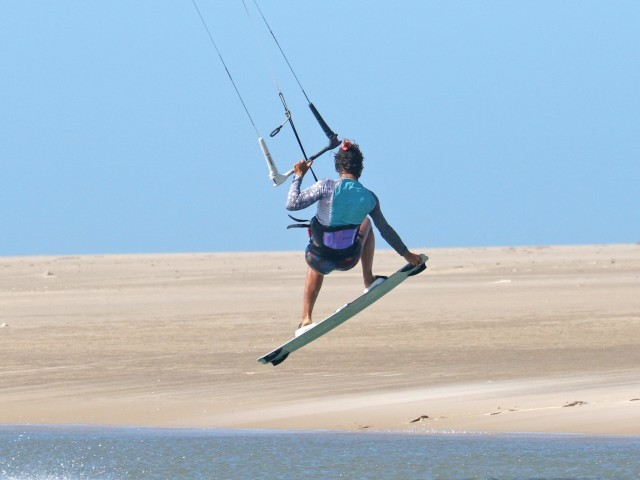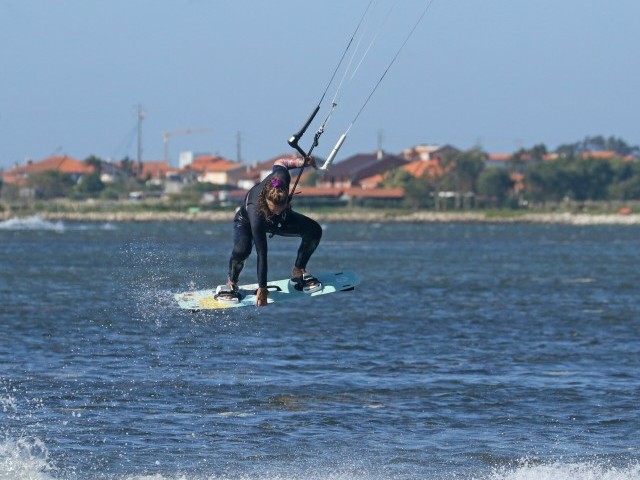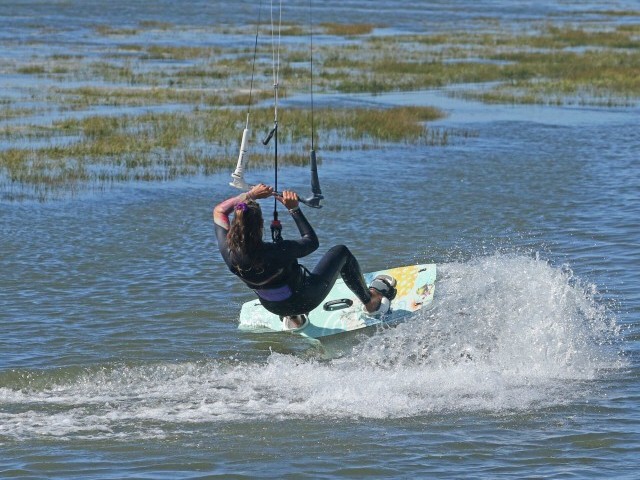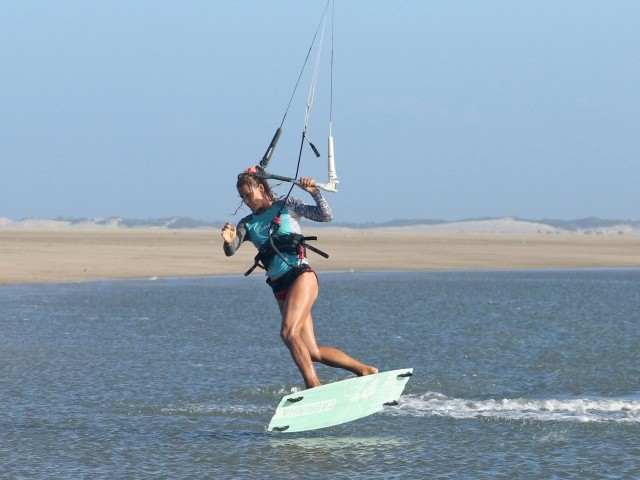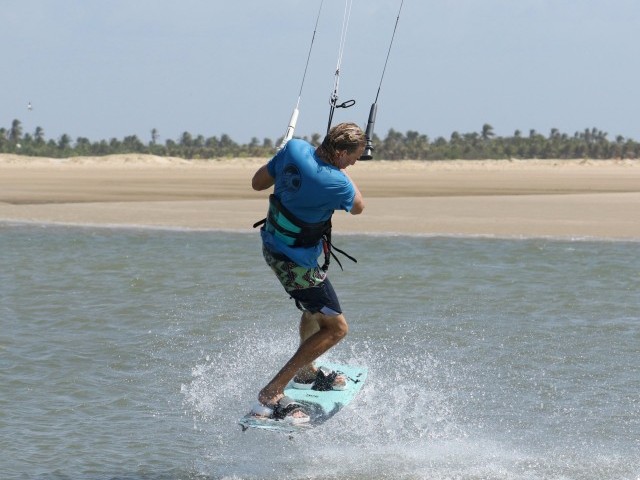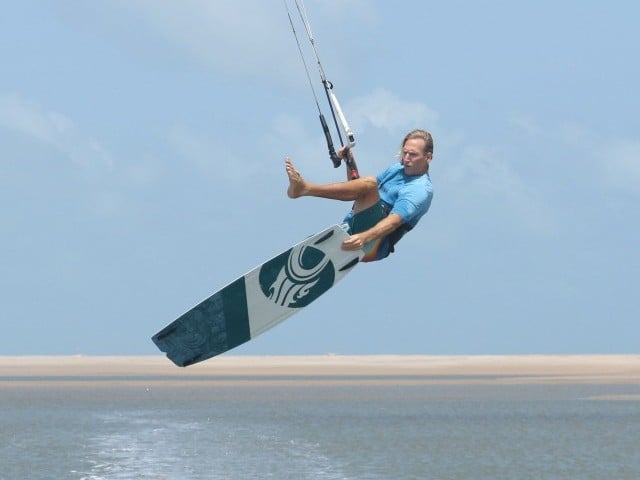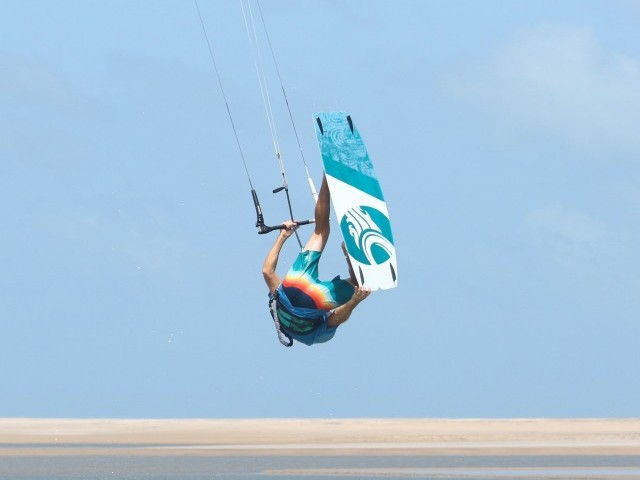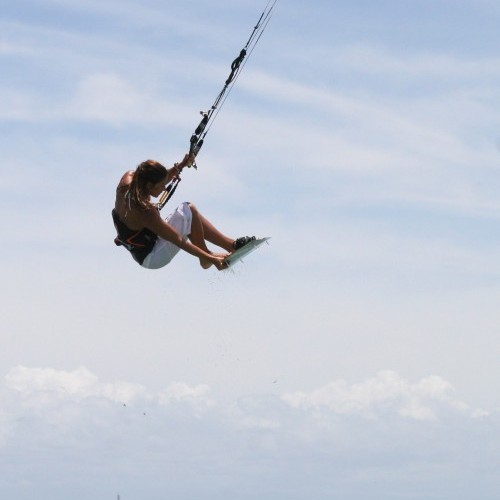
One Foot Jump
Technique / Intermediate
Introduction
We are sometimes prone to bang on about what attracts most people to kitesurfing. Airtime has always been very near the top of the list for most people, and even those who only dreamt of jumping generally end up realising their dream. On a recent trip to Venezuela it was hard not to notice a jolly nice chap who bore more than a striking resemblance to Tarzan, fully enjoying the float of kitesurfing and progressing from good big air, through 1 foots to the full board off.
For those of you with no interest in hurtling your bones at the water in an attempt to emulate the many young guns out there, this old school trickery which salutes many of the original PKRA greats, Koch, Shinn, Tobias, Vari, Austen, to name a few, is an achievable and lovable past time. So our first point of call to hark back to the bygone age of old school has to be the one-footed jump.
Qualifications
To realistically go for one-foots you will need to be comfortably jumping on at least one side. By this we mean that you are able to go up, float and come down in a manner that can loosely be described as controlled. If you can already manage a tail grab then that’s bonza, if you cant don’t worry. The real beauty of adding a trick like this to your armoury is that it will in turn improve the way in which you jump.
Pic 1. Another should do is to have a go on dry land. Just park your behind on the floor, with your board on your feet, rock back, lift your knees, grab the heelside edge with what would be your back hand and slide your foot out and then back in. Not only will this get you used to the movement but it will also get you into the correct position, which you’ll need to adopt in the air.
This practice should also let you see if your footstrap is sufficiently loose to allow your foot to slip easily out and back in. If it’s too tight loosen it as it’ll make life an awful lot easier. Once you have it mastered you can tighten your strap a bit and merely wiggle you foot loose before going for the jump.
Before going for the one foot, follow the steps below and go for a tail grab with your back hand on the heelside rail somewhere between you back foot and the fin. The exact position is not important, just where you feel comfy reaching to.
Make or Break
Assuming that you can jump we’ll not be going into the mechanics of how to jump, but rather how to tune your jump towards getting your hand on the board and pulling your foot out. There are really five main points to focus on, all of them concentrating on getting a comfortable and floaty jump.
1. The approach. Pic A. shows Karine a split second before take off. You can see that she’s holding a good edge with her front leg extended and back leg soft, has a fair bit of speed, she’s not looking at the kite but in front of her and she’s sent the kite back with the bar held at it’s sweet spot.
However the most important aspect of this picture is the angle of Karine’s bar. She has sent the kite back, but not as hard as she could. If she was intending to jump as high as she can she would have angled the bar even harder, so that her left bar end would nearly be touching the centre line! The reason for this is that Karine does not want to be ripped off the water, but rather lifted.
2. The take off. Pic B. Just as Karine leaves the water you can see that her legs are straight and beneath her. Also she is already steering her kite forward to get it above her. Her hands are centred on the bar so she can keep the kite powered without steering it to aggressively in the air.
What Karine has done is actually jumped up off the water once the kite pulled hard, rather than continuing to edge until the kite rips her off the water. This is why her legs are dangling, as she pushed up. If this were a picture of an attempt to go super high, her feet would be flicked slightly behind her, not underneath her.
3. Lift the legs. Pic C. Because Karine has gone for a controlled jump she feels comfortable enough to release her back hand early to grab the board. Also because she has a controlled lift off she can also lift her legs easily. Yet again if she had sent the kite really hard she would still be stretched out and her feet would be behind her.
Possibly the most common reason for finding one foots and board offs difficult is due to the kite being sent to hard as kiters try to get extra height. This means that they have usually reached the apex of their jump before they get near grabbing the board.
4. See the position. Pic D. Here you can clearly see that can has rocked her legs up in front of her as you would on land. With the kite above her she can concentrate and actually look at her footstrap and watch her foot out and in.
Yet again because Karine went for a gentler jump, rather than flying through the air at Mach 10, she is gently floating, which gives her the confidence to try something new.
5. Fly the kite. Pic E. On her way down, and still in the process of getting her foot firmly back into the back strap, Karine is still steering her kite across and forward ready for landing with her front hand.
Another common issue is to drop like a stone from the sky. You should by now realise that when your kite comes back across above you, you almost get a secondary lift, or at the very least you continue to float down slowly. As long as you steer the kite with your front hand you will get that extra bit of time to get your foot back in.
Hopefully now you get the idea that you don’t need mountains of height but rather time with the board in hand. And that this time is the result of a gentle and controlled take off, keeping the bar in with your front hand and steering the kite across and above you.
Now lets put theses elements together with the rest of the jump for a complete and successful 1-foot.
Following Sequence 1
- Pic 1. Having checked to see that the coast is clear, Karin has sent her kite back. She edges hard as normal, but once she feels the kite pulling up she goes with it extending up off her back leg. Note how she is already steering the kite forwards even though she hasn’t left the water. All this will result in a jump that doesn’t feel violent.
- Pic 2. Jumping up off her legs Karine goes up and at the same time gets her kite above her, keeping the bar in on the sweet spot.
- Pic 3. As she goes up she releases her back hand as soon as possible and starts to bring her knees up.
- Pic 4. She reaches done with her back hand, looking at the board to see where she’ll grab it.
- Pic 5. Karine grabs the board with her back hand. She still has the bar pulled in towards the sweet spot and is steering the kite gently over her head.
- Pic 6. Now that she has the board in hand Karine can lift it up with her hand and front foot. Now the board is tilted up towards the heavens it makes it easier for her to get her foot out, as all she need to do is slide it down.
- Pic 7. Once the foot is out try and drop it as low as possible by extending your leg for extra style points.
- Pic 8. Don’t hang about though, time is precious, look at the footstrap and lift you foot towards the board, don’t drop the board towards your foot, but keep it up with your hand and front leg.
- Pic 9. As your foot slides in, hold on tight and try and push it well into the strap so that you’ll feel solid when you land.
- Pic 10. Karine is on her way down so she needs to start diving the kite with her front hand. This also has the added advantage of keeping her up a split second longer.
- Pic 11. As the kite starts to pull Karine downwind, Karine releases the back of the board and looks for her landing spot.
- Pic 12. She garbs the bar with her back hand and turns the board down wind ready for touch down.
- Pic 13. Karine extends her legs and lands tail first and pointing downwind.
- Pic 14. She absorbs the impact and carves back onto her edge.
Common Problems
If you can’t reach the board it’s either behind you or you’re not bringing it up far enough. Remember to rock back and allow yourself to roll back in your harness.
If you start to rotate, as if you were going into a front loop its because you are looking behind you to grab the board rather than bringing it up in front of you.
If you feel that you’re falling out of the sky, it’ll be because you are not flying the kite back above you, so as it stay back you pendulum and drop. Keep pulling on your front hand, but keep it close to the centre of the bar so as not to pull too much. Also try jumping more gently.
Keystones
- Steer the kite back more gently than usual.
- As you feel the kite jump up off your edge
- Immediately steer the kite back above you
- Lift your knees in front of you as you rock back and reach down
- Keep steering the kite forward and above you
This technique article was in Issue 14 of IKSURFMAG.
Related
By Christian and Karine
Christian and Karine have been working together as a coaching team, running improver to advanced kitesurfing clinics since 2003.




